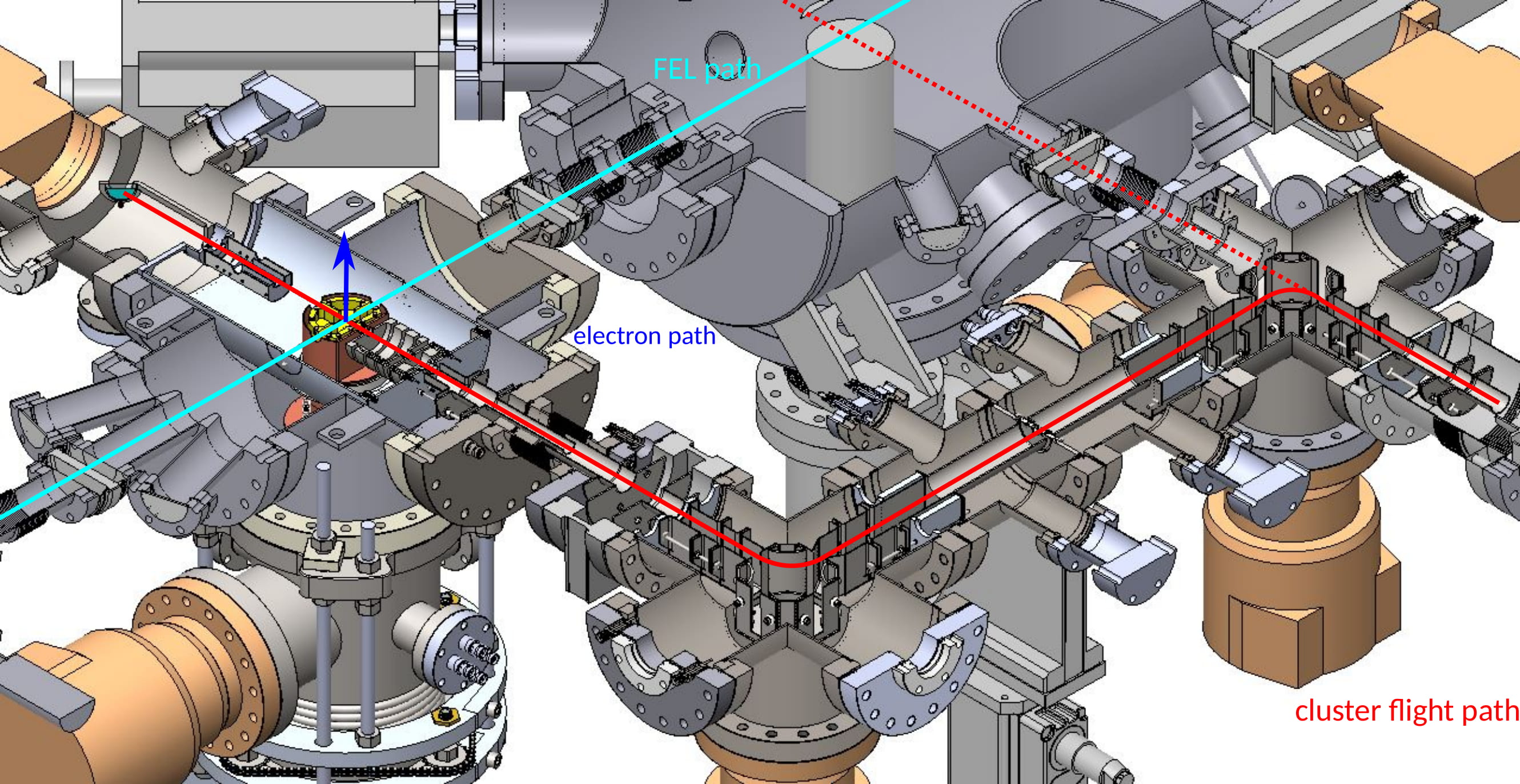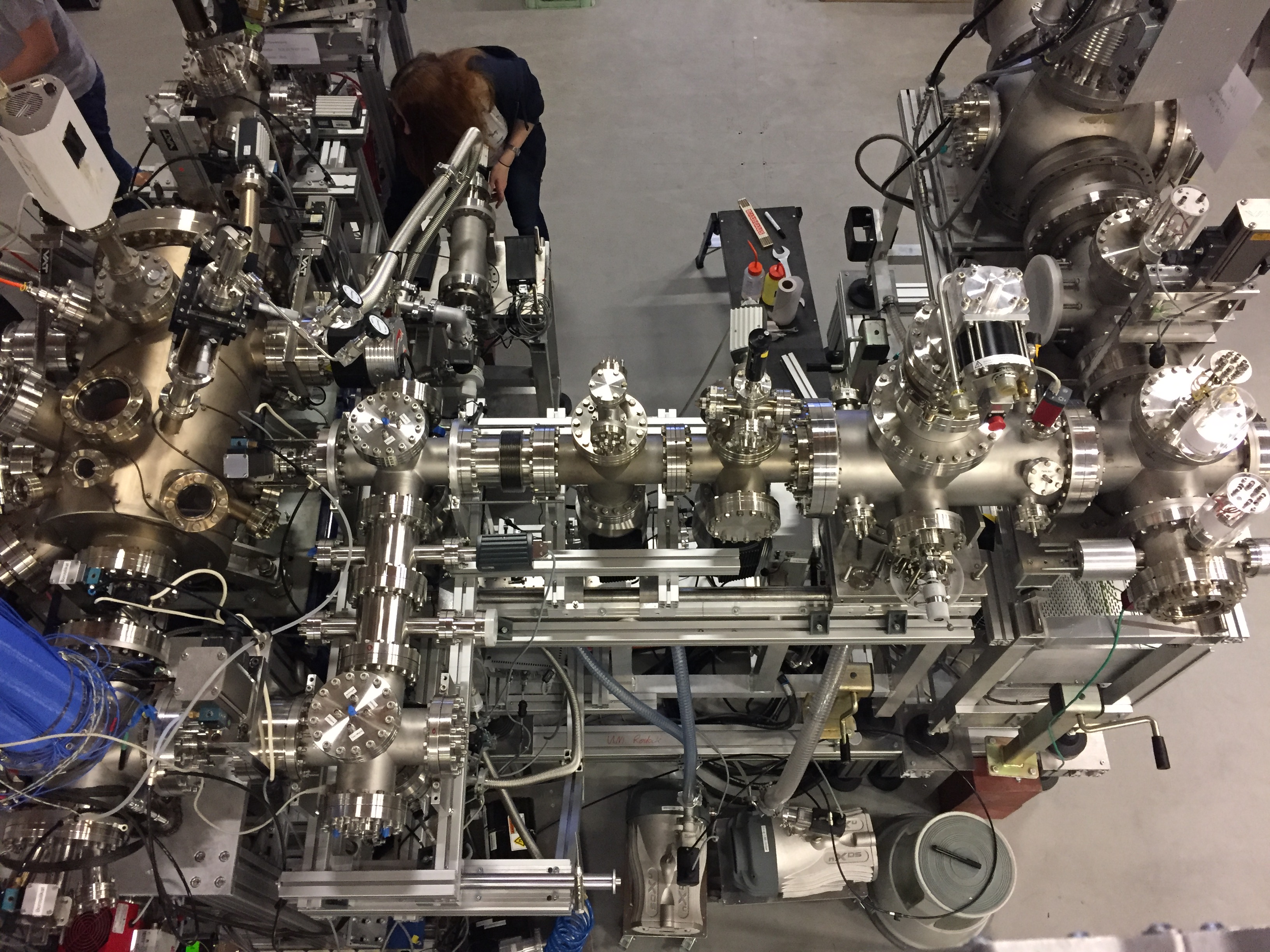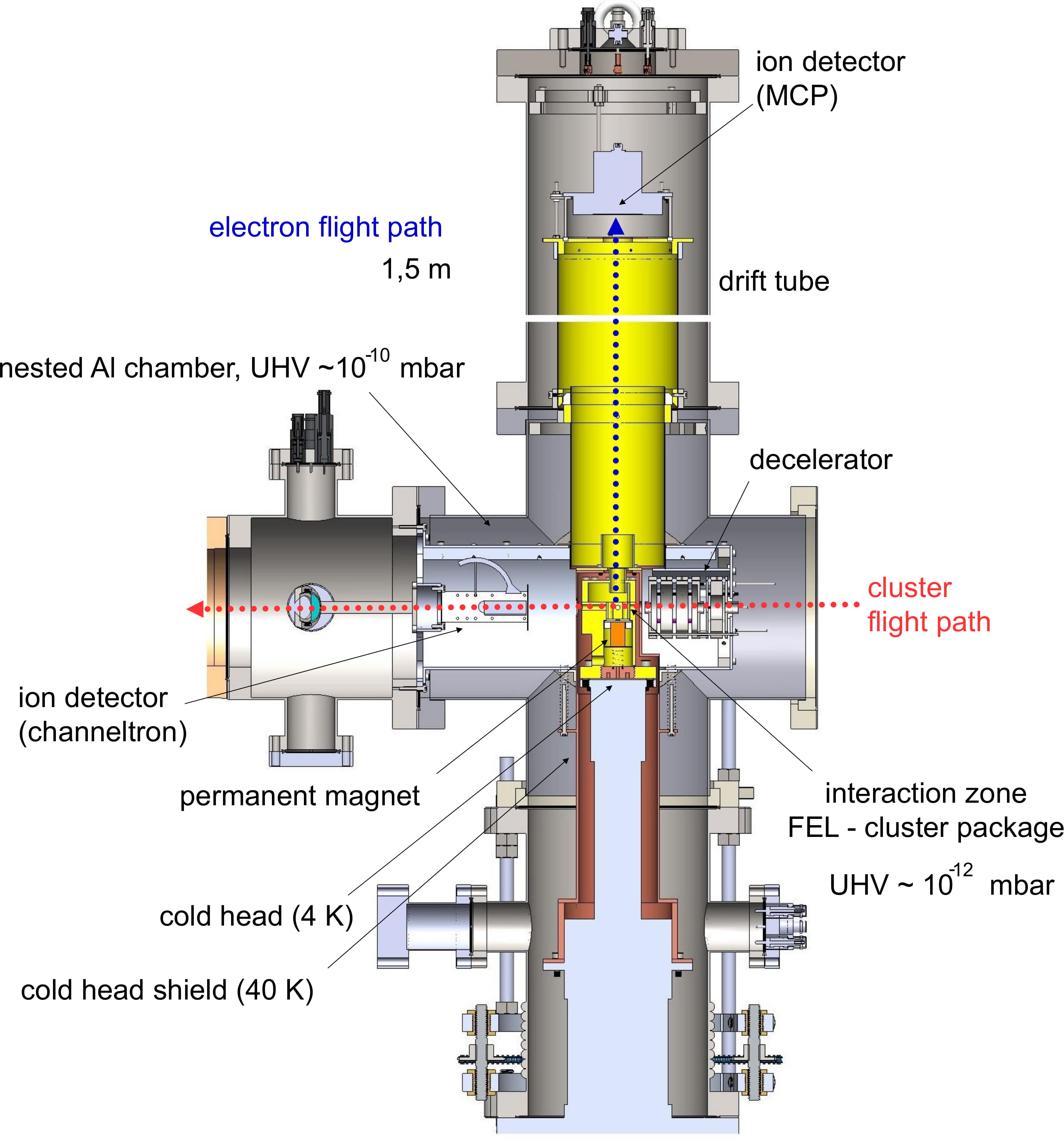Mobile Photoelectron Spectrometer for Free Electron Lasers
Researching PhD students: Kariman Elshimi and *hiring*
Most recent publications: High-Resolution Photoelectron Spectroscopy on Cold Metal Clusters
Motivation
A newly designed XUV magnetic bottle photoelectron spectrometer (MBPES) has been tested at the free electron laser FLASH2 in Hamburg in combination with a cluster source and two time-of-flight spectrometers in order to address the core levels of metal clusters. The high photon energy of 47eV with decent bandwidth allowed us to investigate the 5d levels of lead and the 4d band of silver clusters with a unique resolution and short measurement time. In this high-intensity regime, multiphoton absorption and therefore up to five different charge states have been observed. The results provide a rather comprehensive characterization of the size dependence of the valence and shallow core states density of lead cluster anions in the size range from n = 3 to n = 50 and silver cluster anions in the size range from n = 8 to n = 70.
The total setup
The whole machine is designed and built in collaboration with the group of Prof. Meiwes-Broer in Rostock. One aspect of this development is the design and construction of the ion time-of-flight mass spectrometer supported by measurements on an existing machine at FLASH. A Special RF trap working at both room temperature and low temperatures (~10 K) is for controlling ion packet parameters to fit FEL parameters.

The ion optics
A new switchable and floatable ion transfer system, consisting of two quadrupole benders has been designed. It provides the clusters to be passed either to an interaction region of two field-free TOF spectrometers (upper right) or to the MB-TOF (left) with enhanced resolution and significantly better vacuum due to a cryogenic-cooled interaction region (4K, 10-12mbar)


The spectrometer system
The clusters entering from the right side are slowed down in a static decelerator and focused into the interaction region where photoelectrons are detached by the incoming FEL pulses. Guided by the field of the magnetic bottle spectrometer, they fly on helical trajectories through the drift tube where an additional, time-dependent potential can be applied for resolution enhancement.

Results
The data evaluation is still ongoing work and shows photoelectron spectra of mass-selected, gas-phase lead and silver with binding energies up to 47eV in a so far unseen resolution. Several publications will follow soon.
